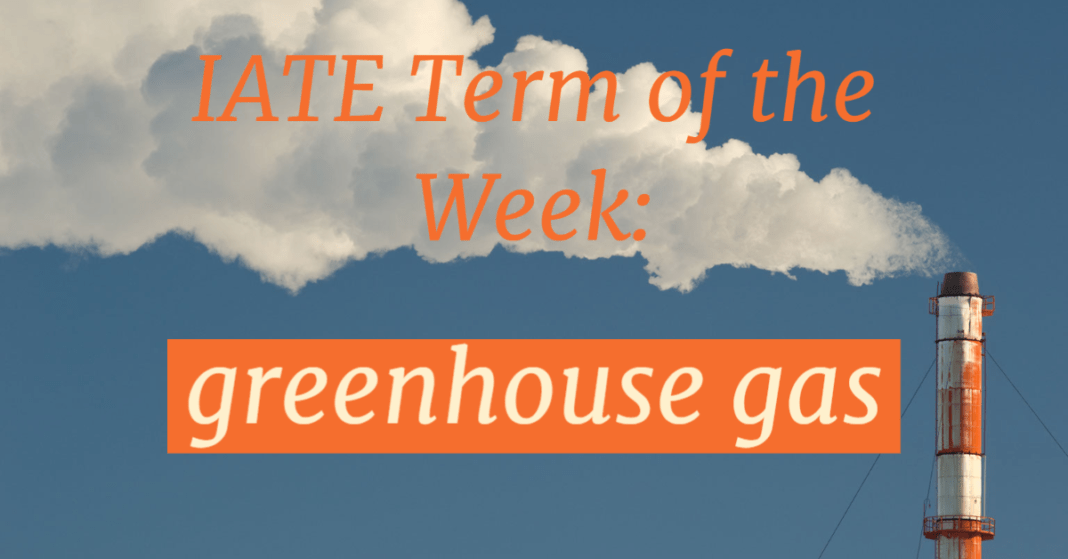The greenhouse effect is known for being one of the most serious issues we have to face when we talk about environmental damage. As the name suggest, it is caused mainly by certain substances also known as greenhouse gases. The effect of each greenhouse gas on the Earth’s climate depends on its chemical nature and its relative concentration in the air. These gases, which naturally occur in the atmosphere, are the following: carbon dioxide, methane, nitrogen oxide, and fluorinated gases, also known as chlorofluorocarbons (CFCs). Water vapor is also one of the greenhouse gases, but it is not considered as harmful as the others, because it mostly comes from natural sources.
In IATE, this term is defined as “gas that has the property of absorbing infrared radiation (net heat energy) emitted from Earth’s surface and reradiating it back to Earth’s surface, thus contributing to the phenomenon known as the greenhouse effect”.

But how do greenhouse gases operate? According to National Geographic, they “let the sun’s light shine onto Earth’s surface, but they trap the heat that reflects back up into the atmosphere. In this way, they act like the insulating glass walls of a greenhouse”.
The problem with these gases arises when their concentration causes extra heat to be trapped within the atmosphere, which leads to an exponential increase in temperature. However, higher temperatures are not their only consequence. For instance, global warming, one of the main consequences generated by greenhouse gas emissions, is changing the earth’s climatic systems in countless ways, such as:
- Extreme weather events (i.e. heat waves, storms, droughts and floods, which occur more frequently and/or more intensely).
- Extreme precipitations: wet areas become wetter and dry areas become dryer.
- Sea levels rising as a result of melting glaciers, sea ice, and rising ocean temperatures.
- Modification of geographic ranges, seasonal activity, migration patterns, as well as ecosystems and natural environments.
Nonetheless, some of the previously mentioned gases, such as water vapour or carbon dioxide, are part of the natural greenhouse effect that allows for human life on Earth, as they help to maintain a 33 °C temperature. It is essential to make a distinction between the natural greenhouse effect and the enhanced greenhouse effect, which refers to the additional radiative forcing resulting from increased concentrations of greenhouse gases and is caused by human activity.
References
Denchak, M. (2019, July 16). Greenhouse Effect 101. Retrieved March 27, 2023, from NRDC.
Mann, M. E. (2023, March 16). Britannica: “greenhouse gas”. Retrieved March 28, 2023.
National Geographic Society. (2022). Greenhouse Effect. National Geographic. Retrieved March 27, 2023.
United Nations. (2022, January 8). 5 things you should know about the greenhouse gases warming the planet. Retrieved March 28, 2023, from UN News.
Written by Carmen del Campo Hermida
 | Born in Madrid, Spain, Carmen holds a Double Degree in Translation and Interpreting and Bachelor in Global Communication. She has also studied a Degree on Content Marketing and Social Media. She has been combining her studies with some part-time jobs, which has allowed her to appreciate little things in life, such as spending time with her family and friends and enjoying her hobbies. She is keen on learning from other people and cultures and wishes to get to travel around the world someday. |

